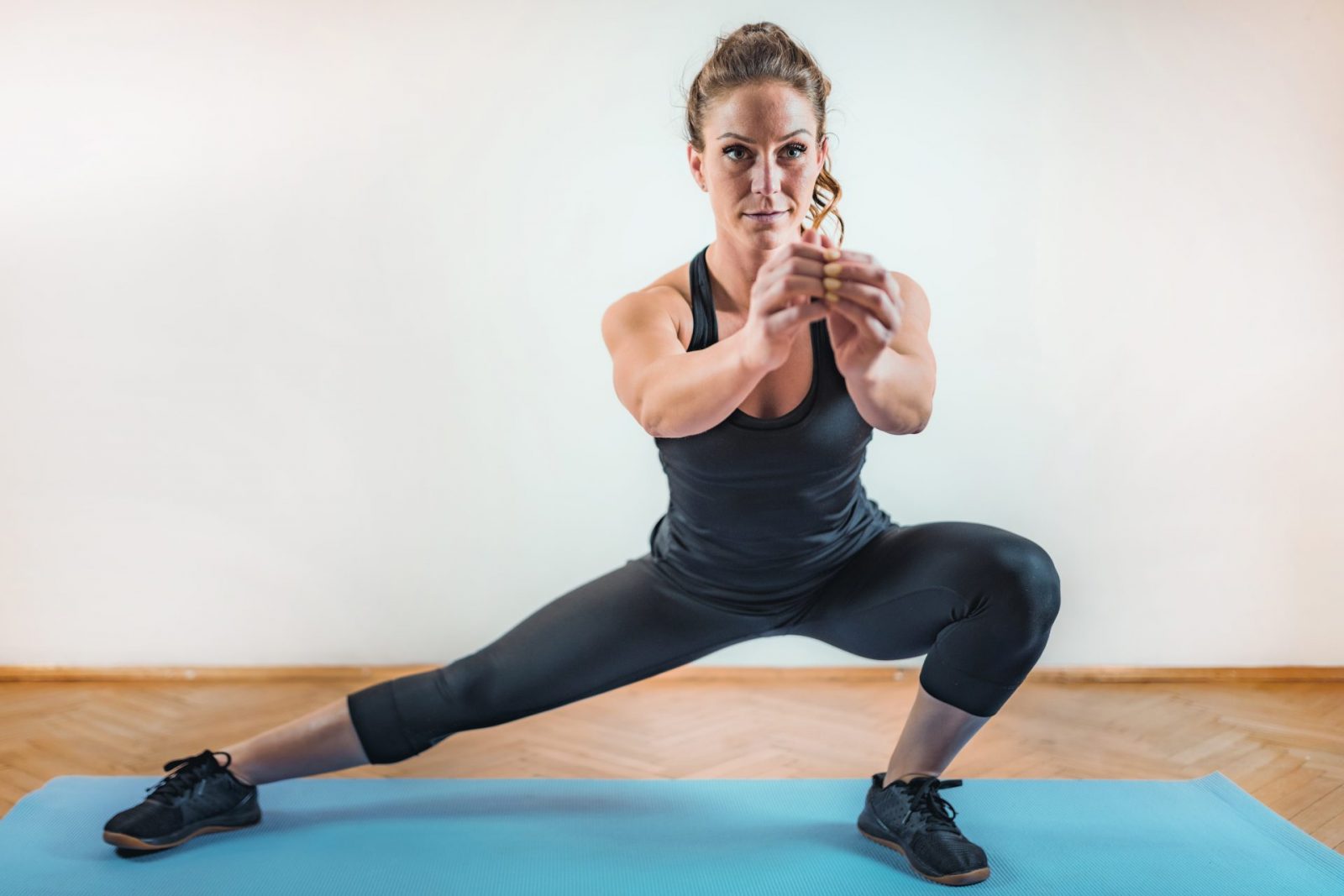
The debate for what makes a good functional exercise is heavily debated and when it comes to lower body the usual answer tends to be a loaded squat or lunge exercise, they portray great functional components helping to strengthen the lower body. However, there are variations of these exercises which can help further progress your functional fitness by incorporating elements of your balance, mobility, a focus on injury prevention and posture. These 4 exercises are all body weight and can easily be done at home or in the garden with a guarantee to give your leg work out a functional boost. As the great American function trainer Michael Boyle says ‘We will never be good at managing an external weight (dumbbell, barbell etc.), if first we aren’t good at managing our own body’.
Prisoner Squat
The prisoner squat is a simple but effective variation of the bog-standard squat exercise. The difference being in its mechanical set up which requires the positioning of the hands to be placed behind the head with the elbows spread equally apart. This mimicking what a prisoner would essentially look like if they were to be arrested.
Benefits
Having the hands placed in this way creates further activation of the parascapular muscles (Posture muscles in the back), and the whole posterior chain. Furthermore, we are now taking away the arms which are a key component in the balancing element of the squat exercise, this creates further tension in the core stabilizing muscles and provides added tension in the lower body providing a more difficult alternative to the standard squat. If this wasn’t enough this exercise also decreases the compression down the thoracic region in the spine further allowing for more reps to be obtained and therefore adding a nice cardio element to the exercise.
Overall, this exercise provides enough components to definitely be worthy of a top 5 place in my functional lower body – bodyweight workout.
Curtsey Lunge
The curtsey lunge originates its name from the obvious fact the movement imitates the curtsey used to address royalty! Although the squat and standard lunge are considered the king and queen of lower body training, I would definitely fight for this exercise to be worthy of a place right next to them.
Benefit
Firstly, the movement requires much greater motor control and balance during the execution as it involves stretching the entire hip articulation and the surrounding muscles. What this means is that more emphasis is placed upon smaller muscle groups for example the glute medius and minimus more so than traditional lunge movements which only target the glute maximus (the big booty muscle!).
For anyone concerned about the visual perspective targeting the smaller groups will equate to a much more well-rounded looking bum! For a functional purpose this exercise places much more emphasis on stabilising muscles around your hip, knee and ankle which will help improve your balance and reduce your injury risk.
Lateral Side Shuffle
Also known as the crab walk, this exercise is another great lower body exercise which goes above and beyond to provide a complete workout to your lower body.
Benefit
As you may have already noticed this exercise requires you to stay in a squat position for the duration of the movement, this in turn creates a great isometric contraction on the quadriceps helping to increase their overall strength. alongside this the side shuffle movement helps target the deep hip muscles such as the adductors, abductors and glute medius. These muscles being responsible for good hip health and prevention of injury. Evidence shows that strengthening the glute medius has a wide range of benefits most notably for runners or people participating in sports with lots of pivoting and jumping. Increasing your glute medius strength will improve your knee path while running as it reduces the lateral stress on the knee, this helping to reduce injuries like IT band syndrome or ACL injuries.
Single Leg Romanian Deadlift
This incredibly versatile exercise is a great functional lower body exercise targeting the whole posterior chain (hamstrings, glutes, calves and back extensors).
Benefit
It is an exercise easily transferrable to tasks that closely simulate everyday life, like picking objects off the floor and getting that saucepan out of the bottom draw. These kinds of daily activities are things you shouldn’t have to think twice about and by doing the single leg Romanian deadlift you will be able to perform these tasks with ease.
What’s great about this exercise is that not only does it strengthen your posterior chain it also tests your balance. Simply by standing on one leg, you are challenging your static balance, by incorporating the movement of a single leg Romanian deadlift, you are now additionally challenging your dynamic balance. Exercises that challenge your dynamic balance are more functional and, for the most part, recommended over static balance exercises once you are able to easily stand on one leg. In turn what you are gaining is increased strength round the ankle, knee and hip while also increasing the flexibility of your hamstrings!




